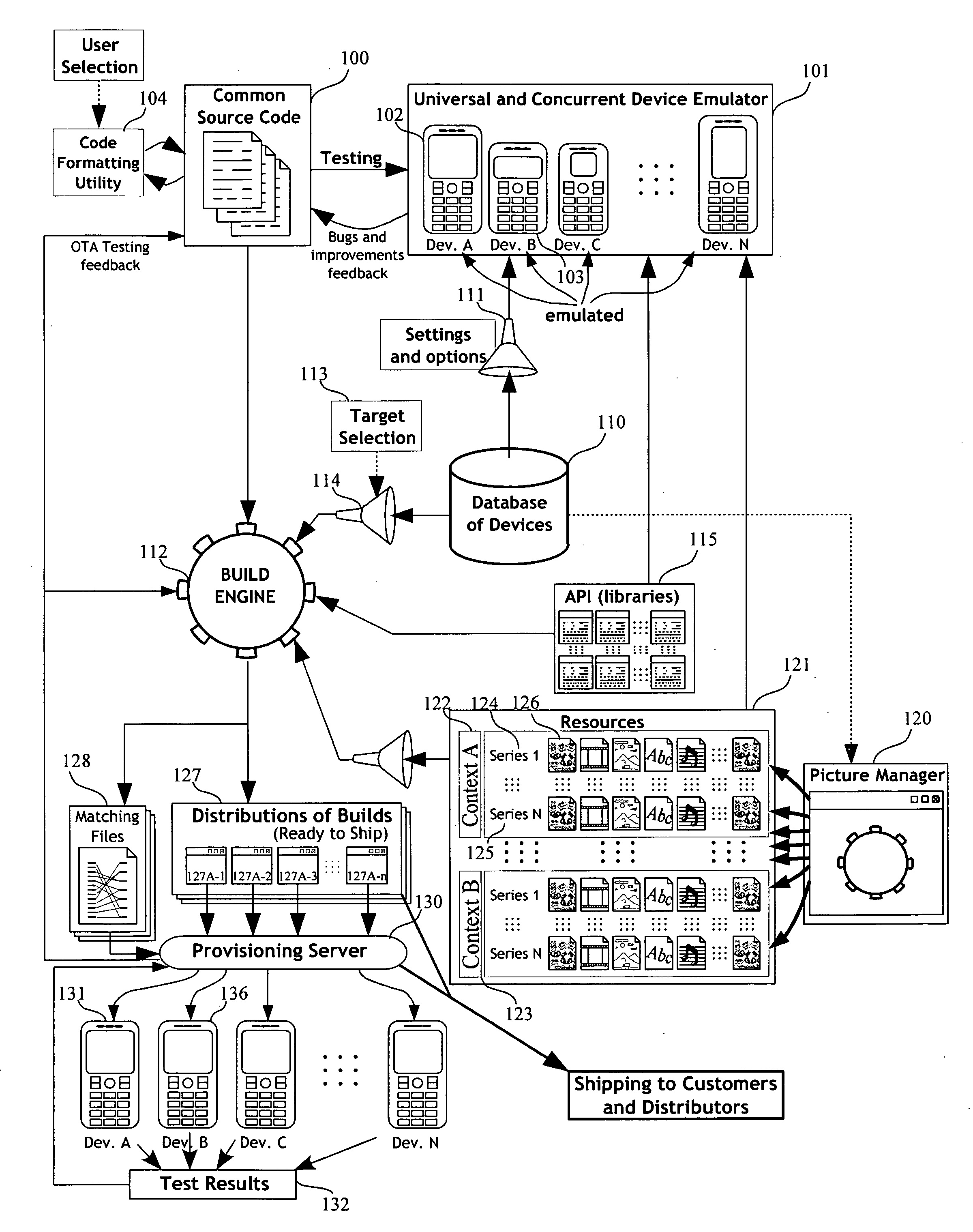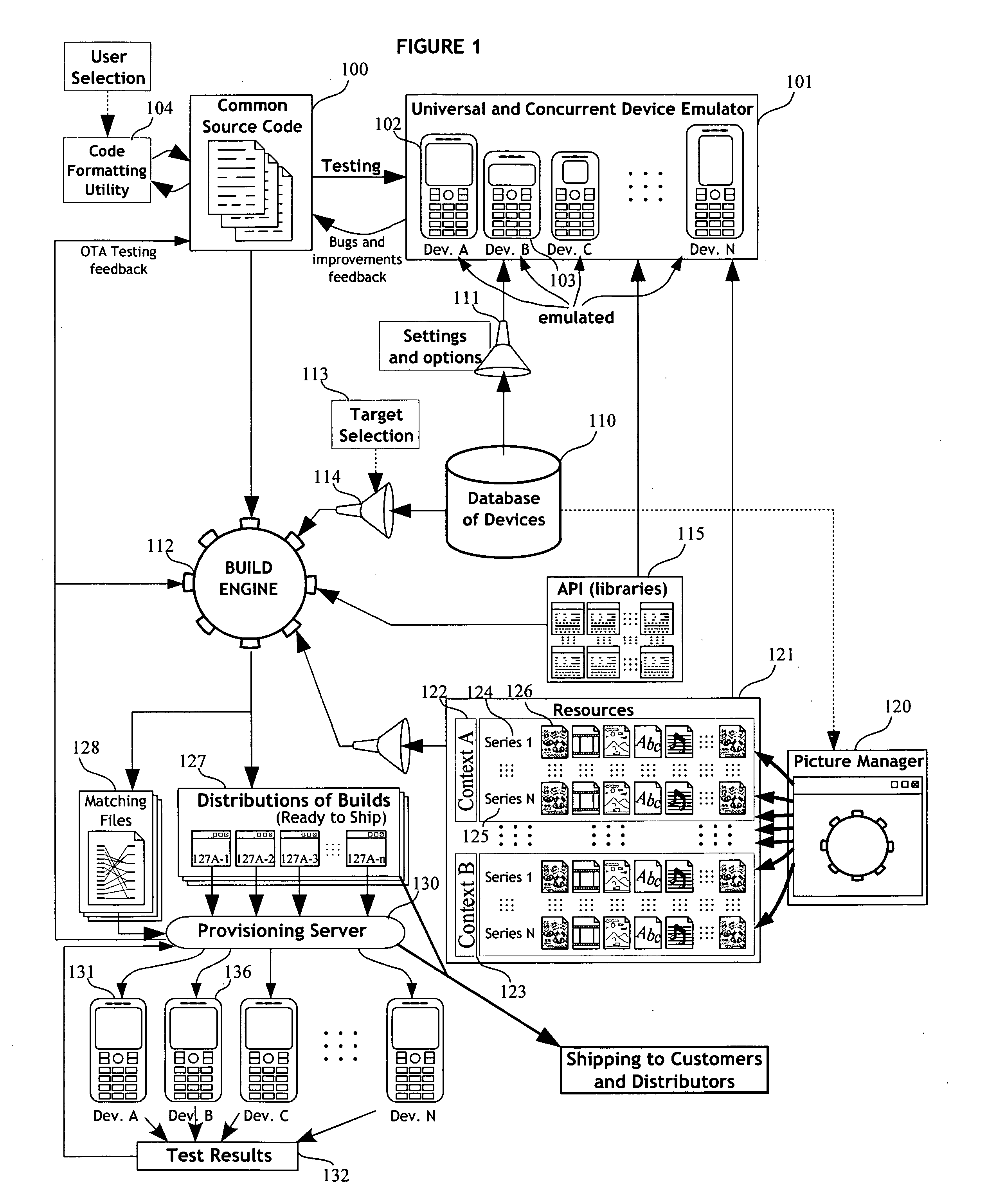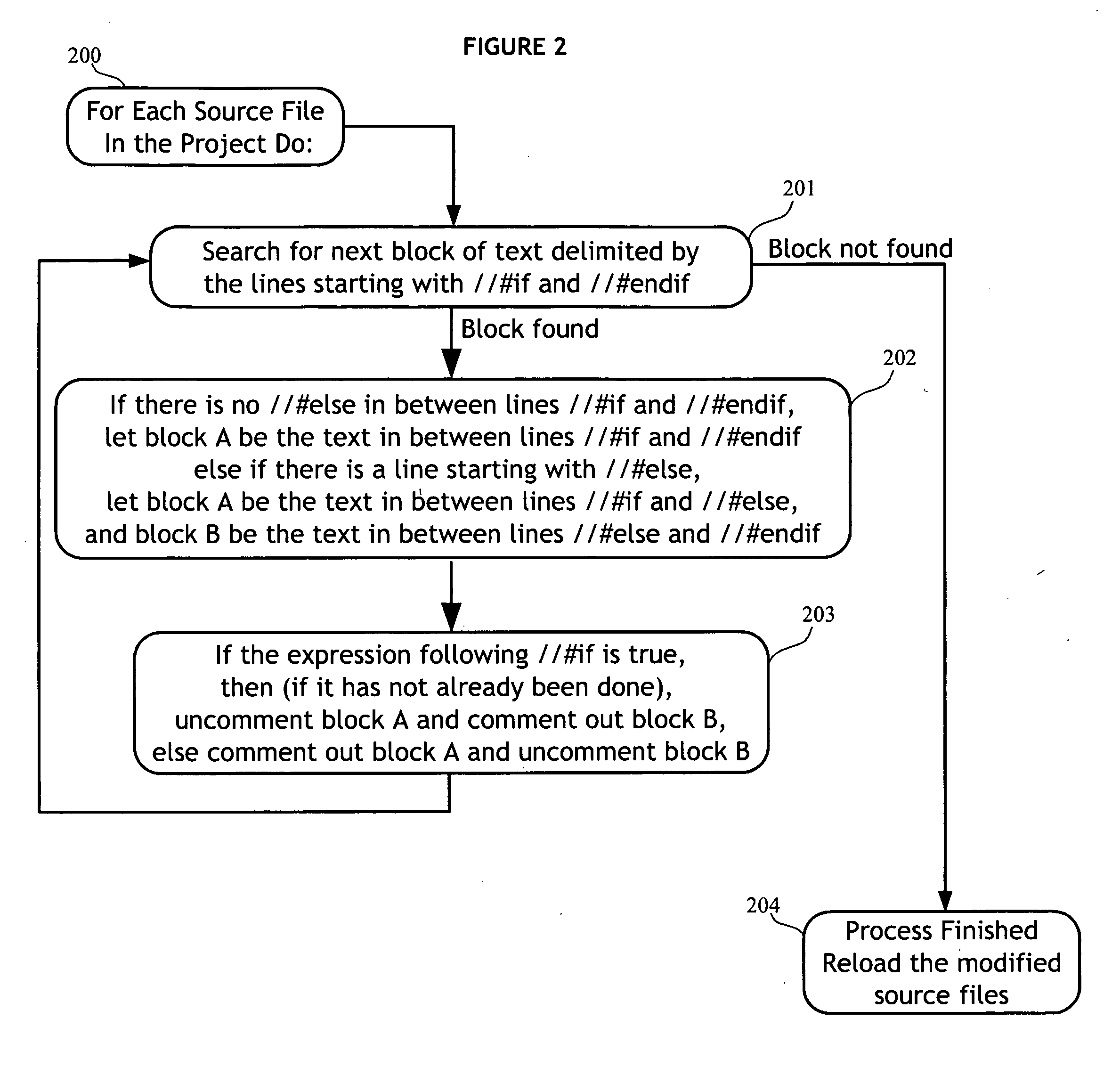Efficient and automatic software application development system for wireless devices
a wireless device and automatic technology, applied in the field of software development and porting, can solve the problems of not being fully compatible with a slightly different implementation, currently one of the main costly components, and occupying a small amount of space, so as to reduce the number of colors automatically associated, the effect of reducing the amount of space occupied
- Summary
- Abstract
- Description
- Claims
- Application Information
AI Technical Summary
Benefits of technology
Problems solved by technology
Method used
Image
Examples
Embodiment Construction
[0102] The present invention is a novel integrated software development and porting system (ISDPS) that can speed up and assist in the entire creation of an application for wireless devices. In the following detailed description, numerous specific details are set forth to provide a full understanding of the present invention. It will be obvious, however, to one ordinarily skilled in the art that the present invention may be practiced without some of these specific details. In other instances, well-known structures and techniques have not been shown in detail so as to avoid unnecessarily obscuring the present invention.
[0103] For clarity, some of the terms are explained below: [0104] Wireless Device: A mobile device. By way of example and not by way of limitation, wireless devices may include, for example, cellular phones, personal digital assistants (PDAs), portable game devices, and automotive devices. [0105] Porting: A process of translating or adapting an application so that the...
PUM
 Login to View More
Login to View More Abstract
Description
Claims
Application Information
 Login to View More
Login to View More - R&D
- Intellectual Property
- Life Sciences
- Materials
- Tech Scout
- Unparalleled Data Quality
- Higher Quality Content
- 60% Fewer Hallucinations
Browse by: Latest US Patents, China's latest patents, Technical Efficacy Thesaurus, Application Domain, Technology Topic, Popular Technical Reports.
© 2025 PatSnap. All rights reserved.Legal|Privacy policy|Modern Slavery Act Transparency Statement|Sitemap|About US| Contact US: help@patsnap.com



